How Often Should You Groom Your Dog?
Keep your dog looking and feeling their best with the ideal grooming routine
Contents
Toggle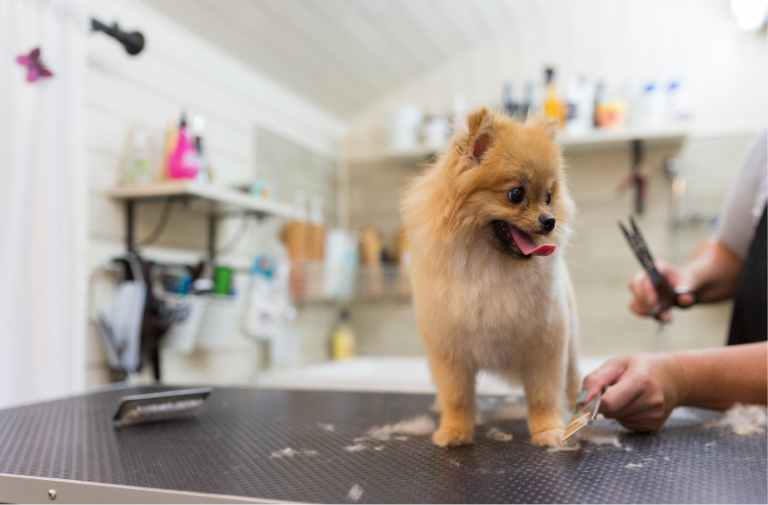
Grooming your dog is far more than just a routine chore. It’s a vital aspect of their overall well-being that strengthens the bond between you and your furry companion. The frequency and type of grooming required can vary greatly depending on your dog’s breed, coat type, and daily activities.
Regular grooming not only keeps your dog looking clean and fresh but also plays a significant role in maintaining their skin health, preventing painful matting, and keeping shedding under control. Whether it’s brushing their coat, trimming their nails, or giving them a bath, every grooming session is an opportunity to check for any unusual signs like lumps, skin irritations, or parasites that might require attention.
When done consistently and correctly, grooming can become a calming and enjoyable routine for both you and your dog. By understanding to their specific grooming needs, you’re investing in their health, happiness, and the incredible bond you share.
A Dog Bath: In How Many Days?
Bathing your dog depends on their activity level, coat type, and overall health. Generally, most dogs require a bath every 4 to 6 weeks. Dogs that frequently play outdoors, roll in mud, or enjoy messy adventures might need baths more often to stay clean and odor-free. Additionally, if your dog has specific skin conditions like allergies or fungal infections, your veterinarian may recommend a more frequent bathing routine using medicated shampoos. You should always prioritize using a dog-specific shampoo that is pH-balanced for canine skin. Human shampoos can be too harsh and cause dryness or irritation.
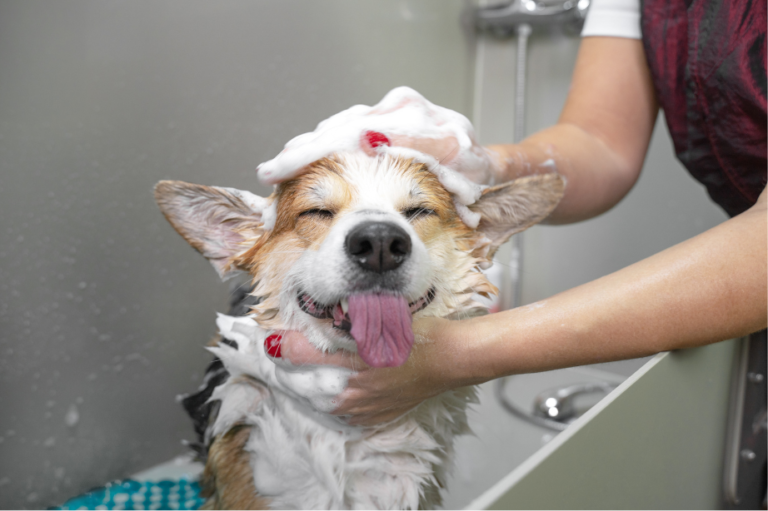
- Dogs with Oily Coats, such as Basset Hounds, often require baths every 2 to 3 weeks to manage the buildup of oil that can lead to odor or skin irritation.
- Breeds with Double Coats, like Huskies or Malamutes, benefit from less frequent baths. Bathing them too often can strip their natural oils, which are essential for keeping their coat waterproof and skin healthy.
Pro Tip
Lorem ipsum dolor sit amet, consectetur adipiscing elit. Ut elit tellus, luctus nec ullamcorper mattis, pulvinar dapibus leo.
How Often Should You Brush Your Dog's Hair?
Brushing doesn’t just keep your dog’s coat in top condition. It also benefits their skin by increasing blood circulation and distributing natural oils, which help maintain skin health. It helps prevent matting, reduces shedding, and promotes a shiny, healthy coat. The frequency and type of brushing your dog needs depend on their breed, coat length, and shedding patterns.
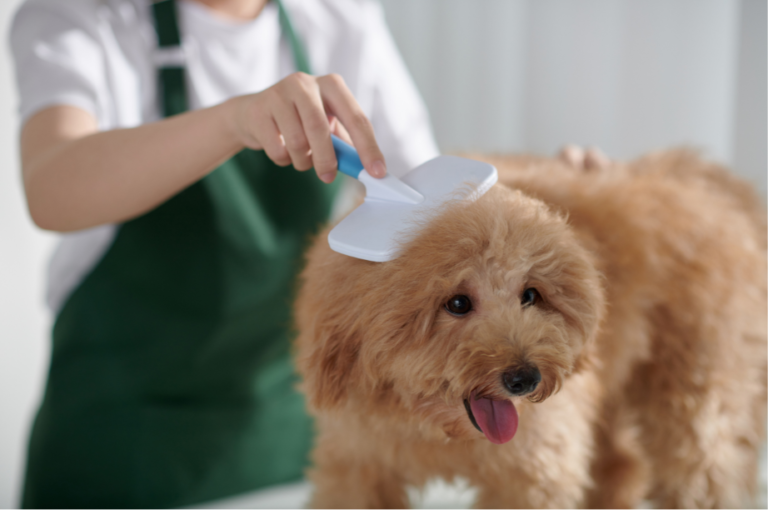
- Short-Haired Breeds like Beagles or Boxers, brushing once a week is typically sufficient. This helps remove loose hair and dirt.
- Medium to Long-Haired Coat Breeds, such as Golden Retrievers, Border Collies, or Spaniels, require more attention. Brushing them 2 to 3 times a week is ideal to prevent tangles and mats, especially in areas like the underbelly and behind the ears.
- Double-Coated Breeds, like German Shepherds, Siberian Huskies, or Alaskan Malamutes, require the most grooming attention. These dogs shed heavily, particularly during their biannual shedding seasons, spring and fall. During these periods, daily brushing is necessary to manage the volume of loose fur and prevent mats from forming in their thick undercoats.
In addition to this, choosing the right brush for your dog’s coat type is important. Always make sure to brush gently, especially when working through tangles or mats, to avoid causing any discomfort.
How Often Do Dogs Need Haircuts?
Not all dogs require regular haircuts, but for breeds with hair that grows continuously, such as Poodles, Shih Tzus, and Maltese, trims are essential for maintaining their coat’s health and preventing discomfort.
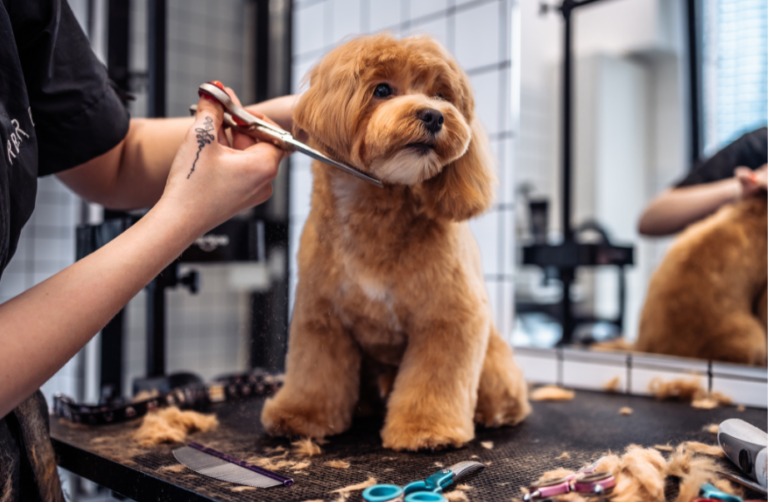
- Long-haired breeds with flowing coats, like Afghan Hounds or Yorkshire Terriers, a trim every 6 to 8 weeks is recommended. Keeping their coat at a manageable length also reduces the amount of debris their fur picks up outdoors.
- Curly or Wavy coat breeds such as Poodles, Bichon Frises, and Doodles (like Labradoodles or Goldendoodles), often require trims every 4 to 6 weeks. These coats are prone to tangling and matting, which can become severe if not addressed.
- Short- haired breeds such as Boxers, Beagles, and Dobermans, generally don’t require full haircuts. However, occasional trims around sensitive areas like the paws, ears, and under the tail can improve hygiene and reduce the risk of irritation or infection.
Improper haircuts can damage your dog’s coat or skin, especially if the coat is cut too short for the breed’s needs. A professional groomer is essential to work with different coat types and can recommend styles that suit both your dog’s breed and lifestyle.
How Often Do Dogs Need Nail Trims?
Keeping your dog’s nails trimmed is a vital aspect of their overall well-being. Overgrown nails are prone to splitting, breaking, or curling into the paw pad, which can be painful and may require veterinary care.
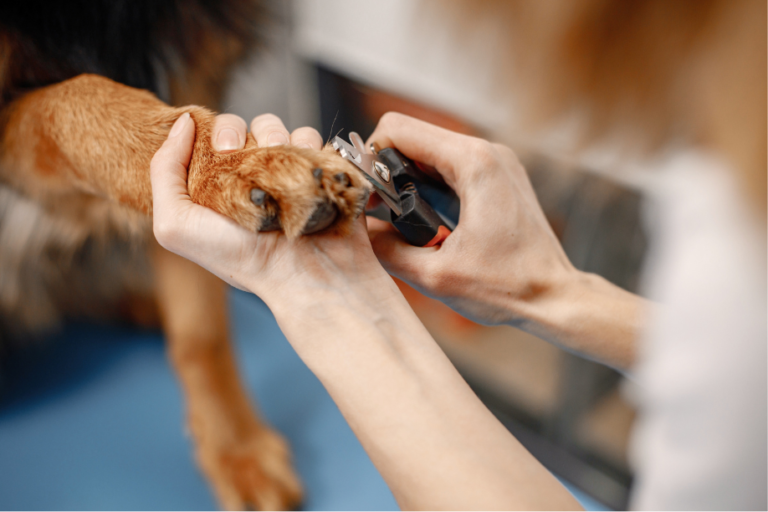
Nail Trimming Frequency
- Active Dogs: Dogs that walk or run frequently on hard surfaces like concrete or pavement tend to wear down their nails naturally. For these dogs, trimming may only be necessary every 4 to 6 weeks to maintain the right length.
- Less Active Dogs: Dogs that spend most of their time indoors or are less active don’t have the opportunity to naturally wear down their nails. In these cases, trims are usually needed every 2 to 4 weeks to prevent overgrowth.
- Puppies: Start trimming puppies’ nails early, even if it’s just a tiny snip. This helps them get used to the process and reduces the risk of fear or anxiety associated with nail care.
Signs Your Dog’s Nails Need Trimming
~If you hear your dog’s nails clicking or tapping on hard floors, they’re too long and need to be trimmed.
~Nails that extend beyond the paw pad are generally too long.
~Watch for signs like limping or hesitation to walk on certain surfaces—these can indicate discomfort caused by long nails.
~Overgrown nails can make it difficult for your dog to scratch effectively, or they might scratch excessively due to irritation.
Ear Cleaning: How Often is it Needed?
Proper ear cleaning is a crucial aspect of your dog’s overall hygiene, helping to prevent infections, discomfort, and potential hearing issues. The structure of a dog’s ear canal makes them more prone to ear infections compared to humans. Dirt, wax buildup, moisture, or parasites can accumulate in the ear, leading to irritation or infections if not cleaned regularly.
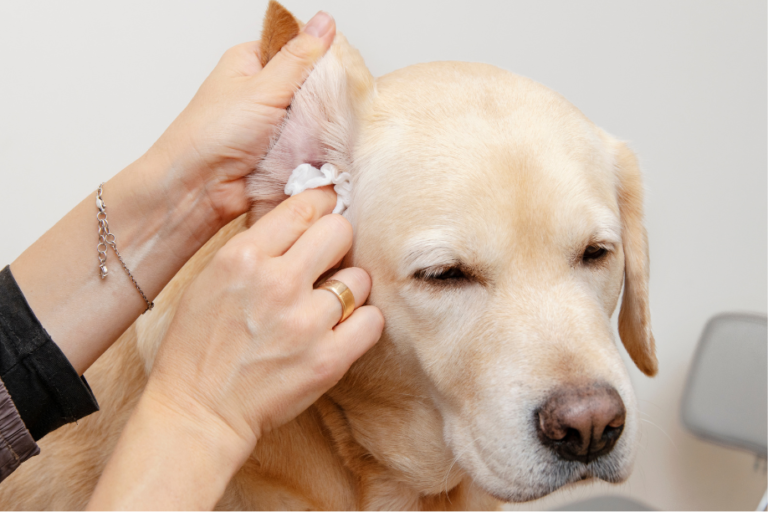
For most dogs, cleaning their ears every 2 to 4 weeks is sufficient to maintain hygiene and prevent issues.
Floppy-Eared Breeds (e.g., Cocker Spaniels, Basset Hounds): These breeds may require cleaning once a week due to reduced airflow in their ears, which can lead to increased wax and moisture buildup.
Active or Water-Loving Dogs: Dogs that swim or play in water frequently may need ear cleaning after every water activity to remove trapped moisture and prevent infections.
Dogs with Allergies or Chronic Ear Issues: These dogs may require more frequent cleanings, as recommended by your vet, to manage inflammation and buildup.
Signs Your Dog’s Ears Need Cleaning
- Unusual Odor: A strong, unpleasant smell coming from the ears can indicate a buildup of wax or an infection.
- Excess Wax: Visible wax or debris in the outer ear is a sign it’s time for a cleaning.
- Scratching or Head Shaking: Persistent scratching at the ears or frequent head shaking may indicate discomfort.
- Redness or Swelling: Red, inflamed skin in or around the ear can signal irritation or infection.
- Moisture or Discharge: Any unusual discharge or excessive moisture in the ear requires attention
How Often Should You Brush Your Dog’s Teeth?
Dental hygiene is a crucial aspect of your dog’s overall well-being, yet it’s often overlooked by many pet owners. Maintaining your dog’s oral health not only prevents dental disease but also bad breath. Dogs are prone to developing plaque and tartar on their teeth, which can lead to periodontal disease if not addressed.
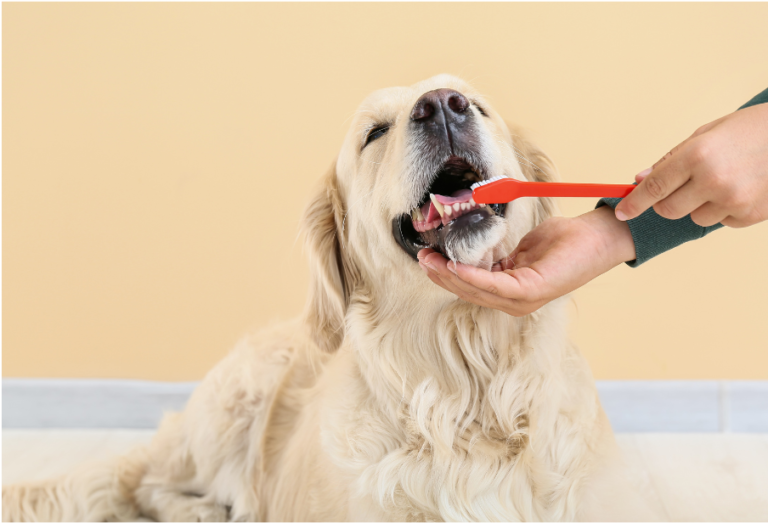
Daily Brushing: Ideally, brushing your dog’s teeth daily is the best way to prevent plaque buildup and maintain fresh breath.
Start Small: If daily brushing isn’t feasible, aim for at least 3–4 times a week to establish a consistent routine and provide noticeable benefits.
Build the Habit: Start early with puppies to get them accustomed to the process. For older dogs, introduce brushing gradually to avoid stress.
Enhance Oral Care with Chews and Toys
Dental Chews
Dental chews are specifically formulated to combat tartar and plaque buildup.Look for chews approved by the Veterinary Oral Health Council (VOHC) to ensure their safety and effectiveness.Choose the right size and hardness for your dog’s breed and chewing habits to avoid choking or damaging teeth.
Dental Toys
Dental toys are a fun and engaging way to maintain oral hygiene, especially for dogs that love to chew. Go for durable toys made of rubber or nylon with textured surfaces designed to scrub teeth and massage gums. Some toys can be stuffed with treats to make chewing even more appealing. Popular options include Kong toys, rope toys, and specialized dental bones.
Raw Bones
Raw bones can naturally scrape off tartar. Choose raw, non-weight-bearing bones like beef knuckles or femurs for safer chewing. Avoid cooked bones, as they are more prone to splintering and causing injuries. Always supervise your dog while they chew on bones or antlers, and remove them if they become too small.
Benefits of Regular Grooming
Promotes Healthy Skin and Coat
Reduces Shedding and Matting
Prevents Infections in Ears, Nails, and Teeth
Strengthens the Bond Between You and Your Dog
Promotes Longevity and Quality of Life